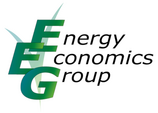Project description
Within the next two years, the team of the project "BIOSTRAT" (Strategies for the optimal bioenergy use in Austria from societies point-of-view – Scenarios up to 2050) aims to identify optimal biomass utilization pathways up to 2050 optimized in terms of minimizing carbon emissions and costs. Therefore, scenarios of biomass utilization pathways up to 2050 are created based on simulations, starting from the historical and current potential and price developments. A core question is which energy carriers should be produced preferentially from the available primary biomass resources - e.g., pellets or wood chips or biofuel? - and in which sectors - heating vs transport vs electricity (and district heating) generation - they should be used. The expected development of demand in these individual sectors is analyzed in this project too. The method of approach applied is based on dynamic modelling on a yearly basis at least up to 2050. For the economic evaluation the overall costs of the individual biomass fractions are compared among each other, as well as in comparison with conventional energy carriers. For the analysis of the carbon balances, LCA are conducted for all biomass-based energy carriers in the considered pathways. In summer 2024 a first stakeholder workshop with policy stakeholders and NGOs is planned. The project “BIOSTRAT” is funded by the Austrian Climate Research Programme (ACRP) 15th Call (2022) and started in September 2023. The project partners are the Bundesforschungszentrum für Wald (BFW), TU Wien, Energy Economics Group (TU Wien - EEG) and BEST (project leader). Göran Berndes (Chalmers, IEA Bioenergy Task 45) supports the project team with his expertise on climate and environmental effects of bioenergy and other biobased systems.




